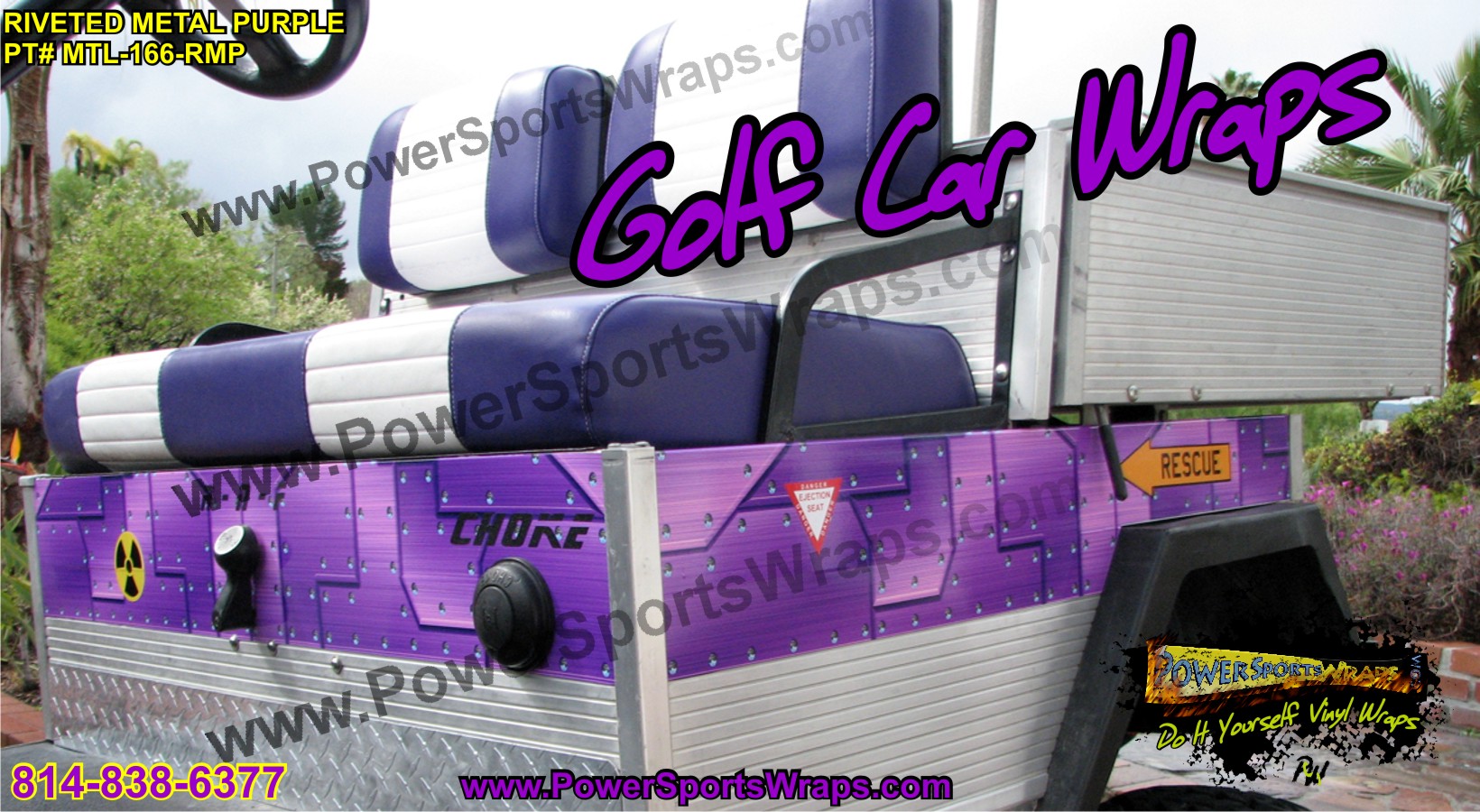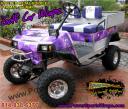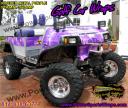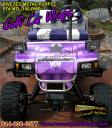

BELOW ARE THE INSTRUCTIONS & NUMBERED PHOTOS FROM OUR CUSTOMER CHUCK ON HOW TO CREATE & APPLY THE VINYL WRAPPING FILM AS IT APPEARS ON HIS DODGE CHALLENGER. THANK YOU VERY MUCH… CHUCK . POWERSPORTS TEAM…
I began step 1 by surfing the internet to find a pattern similar to what I liked. I found the strobe style the most beneficial due to the fact that being all small pieces I could make them from a 2×4 sheet and not see seams. I went with “Moto Blue“. I chose your product because of the thickness and apparent durability. The selection was also great. I made a good choice. Step 2 was prep and initial taping of the car. I started by giving it a thorough wash with dish soap in the areas I would be working. I followed the bath with a good lint free towel. After it dried I used good old fashioned masking tape. (we recommend 70% alcohol wipe as well, prior to application) Using 1″ tape, I followed the body lines of the car going horizontally from the back bumper seam to the front bumper seam. It was a bit tricky making the bends and around the top of the mirrors.In step 3 I applied the diagonal tape going the length of the car. As the distance of the columns between the stripes got bigger, the stripe width got smaller. To accomplish this I made a gauge out of scrap paper. It would measure from the beginning of one diagonal tape column to the beginning of the next. I taped off the front bumper seam, and I used the front door seam to give me an approximate angle to follow. Once I had the angle I wanted, I used a strip of 1″ tape for the first diagonal tape column. After that it got easier. I used the gauge to mark the rest of the diagonal tape locations. I applied one mark on the top strip of 1″ tape, and one on the bottom strip.Complete the taping before applying the stripes. Determine how wide you want the rest of the stripes. I had to change column widths a couple of times due to overlapping the front and back door seams. My next two columns were 1″wide; after that the next four were 1.5″. Five were at 2″, five more at 2.5″, four at 3″, and three at 3.5″. The last five columns were two 4″, two 4.5″, and one at 5″ wide. At this point was where I looked for flaws and decided if it was the pattern I would stick with.Step 4 consisted of making templates by dry rubbing. This step took quite a bit of paper. Starting at the front, I set a piece of paper over the first stripe hole and dry rubbed it with a pencil to get the shape of the stripe. Then I cut it out and marked the template. I numbered each one left 1, left 2, etc. I did not destroy the templates when I was finished. I am keeping them in case I ever have to replace a damaged piece.Transferring the template to the vinyl made up step 5. I flipped the template upside down and traced it on the back of the vinyl sheet. I kept them as close together as possible, so I would not waste the vinyl. I made sure to mark the back of the vinyl appropriately. A razor blade was used to cut the vinyl. Scissors did not work; they distorted the vinyl when cutting.The last step was cleaning the areas with 70% rubbing alcohol, letting it air dry, and applying the vinyl. I used the squeegee and followed the directions that came with the vinyl. This was by far the easiest and most gratifying step. There were a couple of times I had to re-lift the vinyl because of an air bubble being trapped. The Vinyl was actually pretty easy to work with. STEP 6. FINALLY I removed the tape to admire the new stripes. The whole job took me a couple of days, but I definitely enjoyed it.SHOP FOR VINYL WRAPS: www.powersportswraps.com
ORDER DIGITAL MOTO BLUE CAMO:
CONTACT: 866-289-2358







